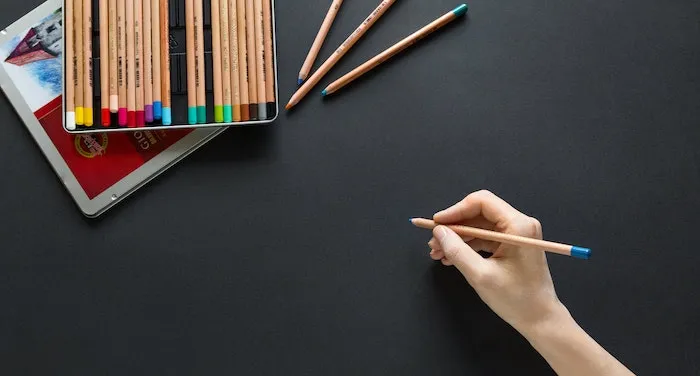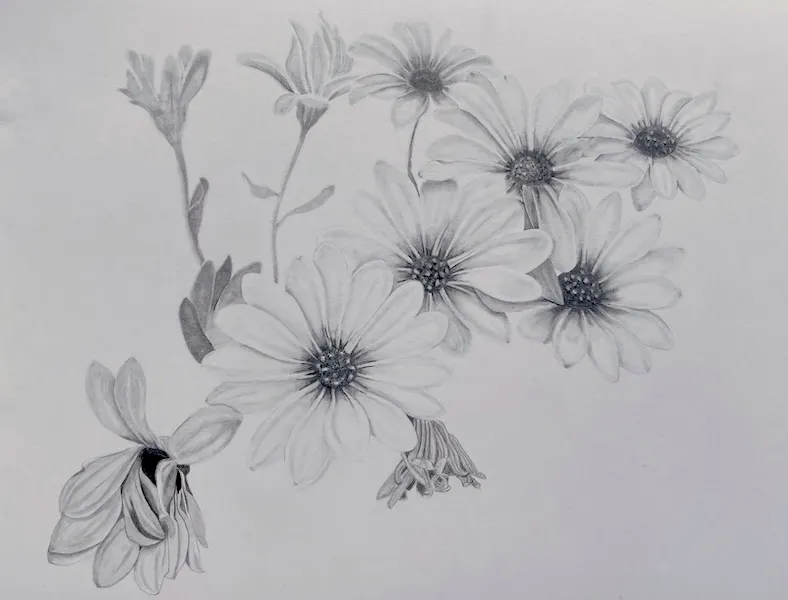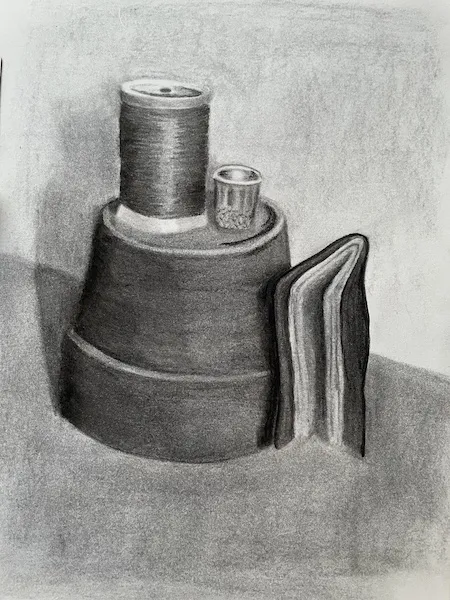
Trust the Process: Learning to Draw from Books
I have never thought of myself as an artist. I was a dancer growing up and somehow always felt that the visual arts (encompassing painting, drawing, etc.), were something I “wasn’t good at,” and — as a gifted Type A person who was good at most things she attempted — I should not bother with them. I got my bachelor’s degree in Art History, and if there’s ever a subject that will solidify the idea that you have to be amazing at art to even start putting pencil or brush to paper, it’s Art History. I leaned into the textile arts instead, learning to knit and weave and spin. Somehow, the act of making textiles makes me feel closer to my ancestors; after all, humans have been clothing ourselves since prehistory, and the method of spinning wool into yarn has not changed since the Neolithic.
Then the world went into lockdown. Finally, I thought, I would start cruising through my mountain of stashed wool and yarn. And I did, for approximately four months, until my niephlets FaceTimed me to let me know that their grandmother had kittens, they were taking two, and this one didn’t have a home. (Insert sad Puss in Boots GIF here.)
Wogglebug joined my household, and suddenly for the first time ever, I have a cat who is relentless about finding and murdering yarn.

And that is when I pulled out a set of stocking stuffer watercolor paints and decided to try my hand at art in a desperate attempt to keep myself sane. With no classes available and only the internet to guide me, I started diving into painting.
If you, like me, have always had a hard time learning skills from books, then you will understand the difficulty I faced. Despite gorgeous color printing, a book cannot teach you to actually mix paint. It can only give you some ideas, then show you what the final result could look like, if you did it like the book’s author did. The lack of specificity between steps in books on “how to art” has always frustrated me; I want things to be good the first time around, to move easily to from step to step, and emerge from the final page to the applause and adoration of my peers.
That is not what book learning is, my friends. It is also not what art is, and despite almost two decades of experience learning to breathe through ripping out a sweater that took me months to knit, I was blindsided by the patience required of learning to draw and paint from books.

I have always believed, only half-facetiously, that the more art supplies and books one has, the better one is at art, no practice required. This is obviously false, although I use it to justify my hoard of art supplies. However, amassing a pandemic’s worth of books about learning to draw and paint has given me a very good idea of what the artist-authors of these books all agree on, and it is: you’re going to genuinely, unequivocally, deeply suck at this before you get better. And like life in general, the only way out is through — in this case, through practice and diligence. Unlike learning to knit, which I did online using videos (knittinghelp.com, strongly recommend), I am learning to see the value of learning to draw and paint from a book. Because unlike knitting, which is the same six stitches in an infinite arrangement, drawing is about what happens when you train your eyes and your hands to move in concert. It is about how you, the artist, train yourself to see.
If I had to start the process over, I’d start where the author-artists all agree is the actual beginning: the foundations of drawing. I dove right in with the painting, and in the last few weeks have had to backtrack a lot. There will come a point in your process where you realize that if you aren’t a skilled draw-er, you can’t be a skilled paint-er. So learn from my mistake, take the advice of people more skilled than I am, and start with a good, foundational drawing book. I am using Lessons in Classical Drawing by Juliette Aristides, as well as attempting the infamous course on learning to sight-size developed by Charles Bargue. Aristides learned using the Bargue method, as did some people whose names you may know: Pablo Picasso and Vincent Van Gogh, NBD. I will say that the Bargue course does require some explanation, which I found on YouTube at The DaVinci Initiative.
The biggest thing I’m learning about art is: there’s no room for perfectionism. The only way through is through unrelenting practice. I’m learning to give up my ego, let pieces teach me what they need to teach me, and move on. The beauty of art is not in its perfection, but in imperfection. The decisions and revisions that come together into a finished piece, whether that piece is finished because you completed it, or because you learned a lesson you can take into the next piece. I’m taking a cue from Trust the Process: An Artist’s Guide to Letting Go and learning not to attach ego or expectations to the work while I’m still in the beginner stages. As a person who is constitutionally incapable of following a recipe to the letter, or a knitting pattern all the way through, it is a challenge.
So go ahead! Find yourself a book or two that speaks to the kind of art you want to learn. Do you love whimsy? Still lifes? Portraits? There’s a book out there for you, and all it needs is a pencil, an eraser, some paper, and the will to learn.









